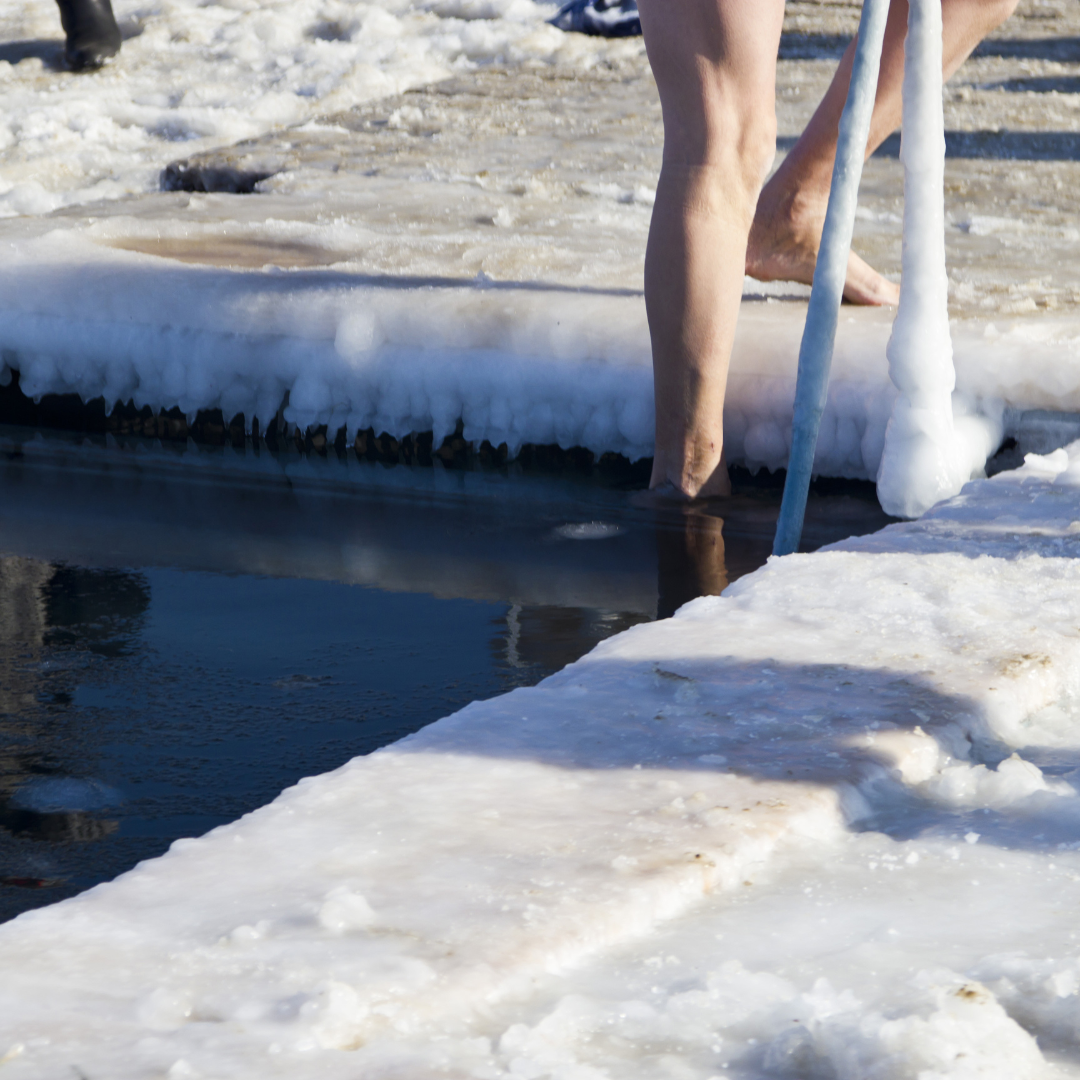How cold should your ice bath be? Does it really matter? Is there a temperature in which you’re not getting benefits, or maybe that it's dangerous? In this article, we will explore the significance of ice bath temperature and its impact on the effectiveness of the practice.
An ice bath, also known as cold water immersion, is a technique where individuals immerse (or submerge) their bodies in cold water for a specific period of time. This practice has been used for centuries to promote recovery, reduce muscle soreness, and aid in the rehabilitation process. Cold water in particular is used because of its specific physiological effects on the body, which can also translate into psychological effects.
So why is temperature so important?
Temperature plays a crucial role in the effectiveness of ice baths or any cold water immersion. While cold water immersion alone or even cold showers can offer benefits, ice baths provide more intense and targeted effects due to the lower temperatures achieved. Ice baths also allow you to control the temperature of the water via the addition of ice.
Understanding the optimal temperature range for ice baths is essential to make sure you’re experiencing the desired effects and to minimise the risks associated with extreme cold exposure. Factors such as the purpose of the ice bath, an individual's body composition and tolerance to cold, and the type and amount of ice used can all influence the temperature you want to be aiming for.
In the following sections, we will delve deeper into why temperature matters in ice baths, the factors influencing ice bath temperatures, the optimal temperature range for specific use cases, and techniques to achieve the temperature you want effectively.

How temperature affects the effectiveness of ice baths
The temperature of the water used in ice baths directly influences the physiological and mental effects experienced by individuals. The primary objective of an ice bath is to induce vasoconstriction, which helps to reduce inflammation, minimise tissue damage, and promote recovery. Sometimes, the lower the temperature the more significant the vasoconstriction and enhanced pain relieving effects are. Cold temperatures can also help decrease metabolic activity and alleviate muscle soreness. However, excessively low temperatures can lead to discomfort, numbness, or even tissue damage, so it's crucial to strike a balance between therapeutic benefits and potential risks.
It's important to note that the optimal temperature for an ice bath can vary depending on several factors, including individual preferences, the specific purpose of the treatment, and the context in which it is used (e.g., post-exercise recovery, or injury rehabilitation). Athletes and practitioners often experiment with different temperatures within the recommended range to find what works best for them in terms of comfort and desired effects.
Factors that influence ice bath temperature
The purpose of the ice bath (recovery vs. performance)
The purpose for which you are using the ice bath can influence the temperature at which the water ideally is. For recovery purposes, a colder temperature is generally recommended but is not always best.
For recovery, temperatures around 10-15 degrees Celsius or 50-59 degrees Fahrenheit can help reduce inflammation, minimise muscle soreness, and promote recovery by constricting blood vessels, decreasing metabolic activity, and numbing nerve endings. This cooling effect can promote recovery by minimising the damage caused by intense exercise and facilitating the removal of waste products like lactic acid.
On the other hand, for performance-related purposes, such as before a workout or a competition, a milder temperature (around 15-20 degrees Celsius or 59-68 degrees Fahrenheit) may be more impactful.
When you are using cold water exposure for performance, the goal is essentially to cool the body in order to counteract the effects of heat buildup during exercise, which then leads to impaired performance. However you don’t want to constrict blood vessels too much as you would then restrict blood flow to the muscles and this could lead to worse performance.
For general use, and to reap the many benefits of ice baths, it’s generally recommended to stick to the 10-15 for 10-15 rule.
Body composition and cold tolerance
Each individual's body composition and tolerance to cold temperatures can vary dramatically, and so it’s important to take this into consideration. Aspects such as body fat percentage, muscle mass, and overall sensitivity to cold can influence the ideal temperature for an ice bath.
If you have a lower body fat percentage you might feel the cold more intensely, while those with a higher percentage essentially have better insulation and might require colder temperatures to achieve their desired effect.
Muscle mass also comes into play here. Muscles are major heat retention tools especially when exercising or being exposed to cold. This means if you have more muscles you are likely to retain more heat when inside an ice bath, again meaning you’ll need the temperature to be lower to achieve what you want to achieve.
All of these intricacies mean that you really need to experiment with what works for you based on your body composition. Test different temperatures out to see how you feel.
Optimal temperature for ice baths
As we mentioned above, the general recommendation is 10-15 degrees Celsius (50-59 Farenheit) for optimal benefits and for most people’s purposes.
The rule of thumb with regards to temperature is that you want to feel the sensation of: this is REALLY cold and I want to get out, BUT I can safely stay in.
If you’re using an ice bath for recovery purposes, this same temperature range is advised. However if you’re using the ice bath for performance enhancement then you should opt for a higher temperature of around 15-20 degrees Celsius (59-68 degrees Farenheit).
Sometimes people think that colder is better. This is not necessarily the case and you should always be cautious when dealing with the elements.
Using water that is too cold can result in cold stress injuries such as hypothermia and frostbite. This is essentially when your body fails to generate heat faster than it’s losing it.
You are also at the risk of more psychological effects where you go into a shock-like state due to the stress that is being placed on your body.
Always, always, consult a medical professional before getting into an ice bath. We also advise 2 important things: have someone there with you at all times just in case anything happens, and just to be safe start with warmer water - you can always make it colder later and gradually.
How to achieve the optimal temperature in an ice bath
Achieving the perfect temperature for your ice bath involves careful monitoring and control of the water temperature.
Here are some tips for managing the temperature:
- Monitor the temperature: Use a reliable water thermometer to monitor the temperature. Digital or waterproof thermometers are best for the most accurate readings. Make sure the thermometer is immersed in the water so you’re getting the right read.
- Adjusting the water temperature: Start with water at a slightly higher temperature than the range you ultimately want it in. Gradually add ice while monitoring the temperature until the desired range is reached. This gradual approach allows for better control and helps prevent the water from becoming too cold too quickly.
- Adding ice: Use a sufficient amount of ice to get the temperature where you want it. The exact amount you need will depend on factors such as the volume of water, desired temperature, and ice melt rate. Large ice cubes or bags of ice are commonly used. It's generally recommended to add the ice gradually, stirring the water to promote even cooling.
- Stirring the water: Stirring the water during the ice bath can help distribute the cold and maintain a consistent temperature throughout the bath. Use a paddle or a similar tool to gently stir the water every now and again.
- Duration of the ice bath: Keep in mind that the duration of the ice bath can also affect the water temperature. If the ice bath will be longer than 10 minutes, consider preparing additional ice to maintain the temperature while you’re in the bath.
In summary, the optimal temperature for an ice bath depends on the purpose, individual preferences, and safety considerations. Experimentation and individual adjustment are absolutely necessary to find the temperature range that works best for you. Always listen to your body and consult with professionals if you have any concerns or questions.





Dejar un comentario
Este sitio está protegido por hCaptcha y se aplican la Política de privacidad de hCaptcha y los Términos del servicio.